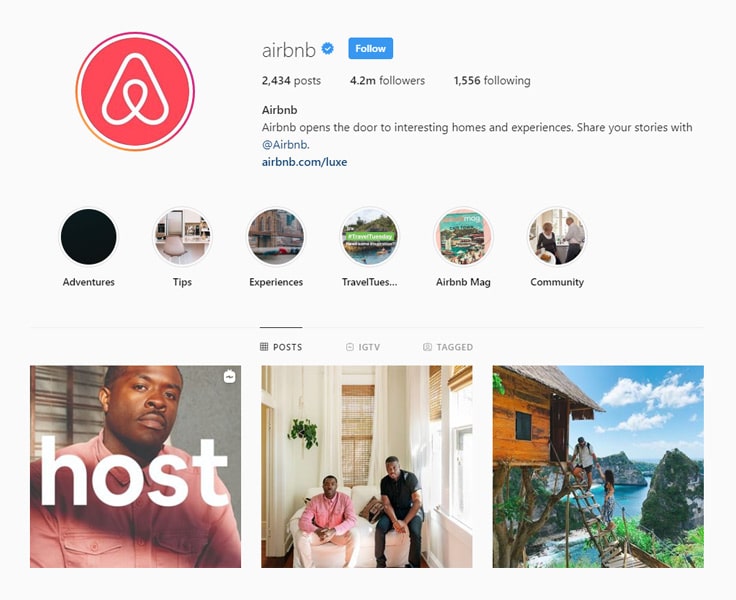All business owners face the ongoing task of attracting new customers and working to retain them. However, as a small business owner, you likely have to execute your great marketing ideas with limited time and budgets.
You might already be using a mix of the following marketing strategies:
- Paid Google advertising
- Traditional media outlets
- Networking events
- Press releases
We’ve also gathered 14 tried-and-true, low-cost or free business marketing ideas to boost your small business and increase brand awareness.
Common Forms of Marketing Small Businesses Can Use
1. Search Engine Optimization (SEO)
A high-quality, relevant website ranks higher in web search results, and being “found” on the web is an essential part of any modern business’s success. SEO is the practice of positioning your website to provide the best answers on specific topics and keywords that matter to your target audience.
Through a combination of keyword placement, quality design and links with other businesses, SEO has become the cornerstone of modern marketing.
2. Content Marketing
Content marketing is the process of developing and distributing information about a group of subject matters pertaining to your business that provides value to customers and a larger audience base.
Content can include blog posts, videos and storefront advertising banners. Content marketing is a long-term investment that requires time and dedication.
3. Social Media Marketing
Social media marketing is the practice of engaging with customers, prospects or industry peers via social media platforms such as Facebook or LinkedIn.
Social media can build deeper connections with existing customers and expose your business to new communities, drawing attention to your site and increasing traffic.
Many fresh marketing ideas include utilizing social media, so investigate different channels and see what works best for your business and audience. Other platforms to consider include the following:
- YouTube
- TikTok
- Quora
4. Email Marketing
Like social media, email marketing is a way to cultivate and communicate with your audience. The difference is it’s one-to-one versus one-to-many. Email marketing is a privileged opportunity. Consumers who share their email address with you are essentially saying, “Yes, I want to see more from you.”
Email marketing allows you to tailor messaging to your customers and subscribers. For example, you can send promotional emails to subscribers who’ve already purchased from you.
5. Word-of-Mouth Marketing
Humans are wired to trust those closest to them, as well as those who are like them. Because of this, getting a customer to recommend your business or share their experience is perhaps more valuable than other business promotion ideas.
6. Promotional Sales
Buy one, get one (BOGO) discounts like these are used to entice consumers to support businesses across any industry and are a key part of the 7 P’s of marketing. While there are no direct marketing costs associated with lowering the price of goods and services by your customer, be strategic when using promotional discounts. Over-reliance on this method can ultimately harm profits, even with good sales numbers.
7. Contests and Giveaways
Hosting a contest with a highly coveted prize is a terrific tactic for businesses looking for free marketing ideas. One of the benefits of these types of promotions is that the prize doesn’t necessarily need to be of great monetary value.
Is there anything better than winning? The value comes from how the audience feels about the prize, even if it’s as simple as a T-shirt.
8. Customer Service
Treating someone well doesn’t cost a thing. Instituting standards regarding interactions with customers can have a lasting impact, beyond a single transaction.
In a sense, customer service is part of word-of-mouth marketing. How you approach customer service has a direct influence on what clients and the general public says about you.
9. Be Visible Online
The Internet is teeming with platforms that don’t cost a thing. Though you may not have wads of cash to spend on marketing, that doesn’t mean there aren’t effective ways to expose your brand to online audiences.
One way is to register your business with Google Places, Yahoo! Local or Bing. Doing so will ensure your business appears on the SERPs when users are searching for local listings.
Another free channel to explore is YouTube. By creating promotional videos, explainer videos and more, you can increase your brand exposure and drive more traffic to your site.
While Google is the search engine most likely to generate the greatest volume of traffic, you may also try:
- Yelp
- Trustpilot
- Glassdoor
- Foursquare
- Bing
- TripAdvisor
Your brand awareness extends to online reviews and recommendations. Having a presence on (and marketing ideas for) these platforms is crucial.
To make sure you’re generating reviews consistently, design a review process for your customers that’s easy for anyone to follow. This can be done by delivering straightforward instructions on your website or through linking on your site.
10. Publish Impactful Content
The web has exploded. There are just under 2 billion websites on the Internet — a number that (combined with more than 4 billion webpages) continues to grow and change each day.
What does this mean for your business? It should continuously produce high-quality content that provides accessible information to the audience it serves.
Awesome content will eventually win out. When you create product- or client-driven videos to post on YouTube, for instance, you will likely see a spike in your website’s page views.
For example, learning how to make a good blog post takes more than writing ability. Creating a great blog post involves providing a direct answer to a specific question, topic or technical process.
Before publishing anything, it’s good to ask yourself the following questions:
- Does this content help sales conversions and/or branding?
- Does this content provide answers quickly?
- Would you share this content on social?
If you can answer “yes” to each, you’ve likely got a valuable piece of marketing on your hands.
11. Find the Right Distribution Strategy
Once you’ve created a killer piece of content, you need to maximize its value by getting as many interested eyes on it as possible.
Today, much of this distribution is done through social platforms like Facebook, Twitter and Reddit. Paid advertising is often the best solution on these channels, but there are ways to distribute for free.
There is still one area where nearly all of your messages will reach your target audience: private groups. Establishing a private group is much like building an email list, in that it can take longer to yield substantial results than direct advertising options. The trust you build, however, is invaluable.
12. Create a Newsletter Worth Forwarding
Figuring out how to do email marketing for free can be quite challenging, mainly due to the software required to segment and organize your data. Nevertheless, it’s possible, and a great marketing idea for a small business.
The most successful email marketing initiatives often feature a newsletter that’s worth signing up for. E-newsletters provide significant value to subscribers, eventually becoming a great tool to attract customers.
With a combination of customer research and industry knowledge, you can create insightful and meaningful materials that will have your audience awaiting the next edition of your newsletter.
13. Establish Industry Partnerships
Creating strategic partnerships organizations in or outside your industry is one of the best free marketing ideas any business can pursue. By collaborating with businesses that enhance your own offerings, you’ll be exposed to a new customer base.
These partnerships can be executed in a variety of ways, including in-person events, sales discounts, product packages and other cross-promotional marketing opportunities.
By establishing strategic partnerships, you can essentially double your marketing efforts and increase your reach.
14. Experiment with Guerilla Marketing
Guerilla marketing, at its core, is the practice of a business using highly visible and trafficked public space to increase its profile. While it might sound strange, learning how to do guerilla marketing only takes imagination and a little bit of courage.
Effective examples of guerilla marketing include well-placed stickers, sidewalk chalk that forces perspective, optical illusions and even causes marketing in some instances.
Once you’ve found the right business promotion ideas, take the time to create an execution strategy around it, including how you expect the general public to engage with your campaign.
Social hashtags and other calls to action can be placed on the scene, increasing your reach and the effectiveness of your campaign.
While creative marketing ideas can help your small business, there are still costs associated with making sure each strategy is executed. Marketing costs might include your human resources, promotional investment and graphic design.















